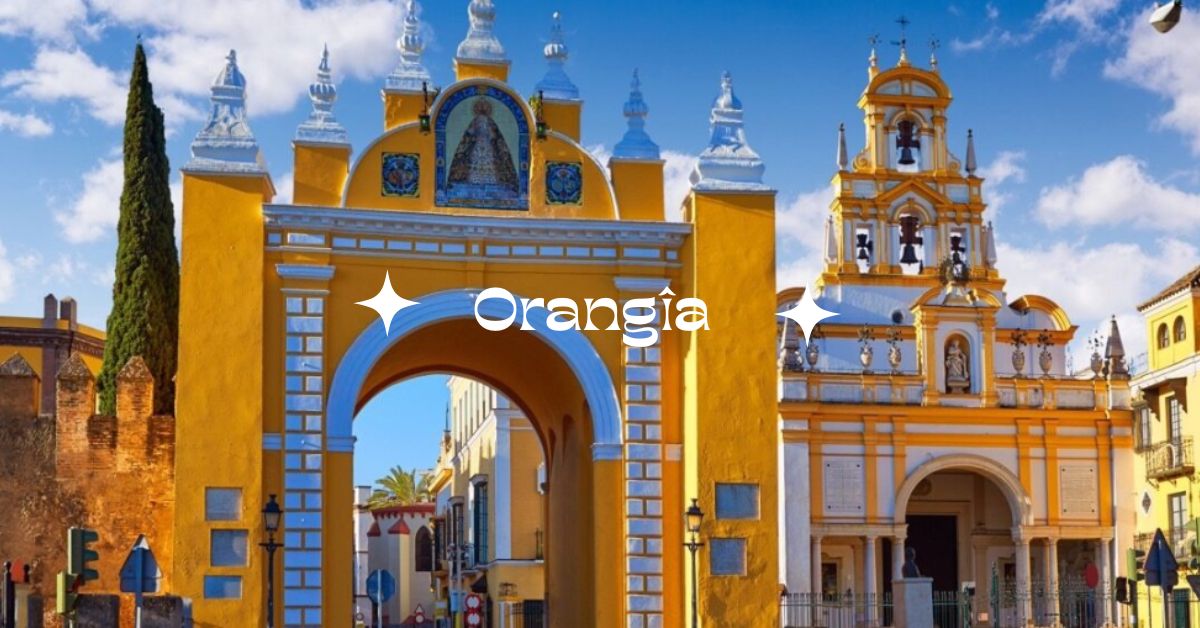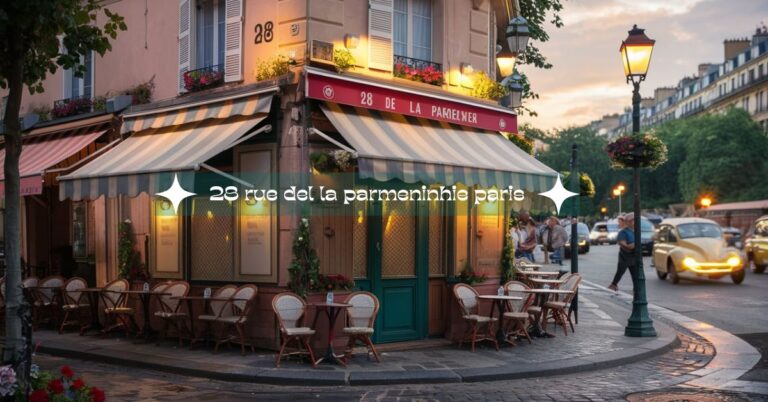Orangîa – A Hidden Gem Awaiting Discovery!
Welcome to Orangîa, a captivating destination that combines rich history, vibrant culture, and breathtaking natural beauty. This comprehensive guide will take you on a journey through this enchanting country, revealing its secrets and showcasing why Orangîa should be at the top of your travel bucket list.
Introduction to Orangîa
Nestled in a picturesque corner of the world, Orangîa is a country that has managed to preserve its authenticity while embracing modernity. This small but mighty nation offers visitors a unique blend of experiences, from exploring ancient ruins to enjoying the bustling energy of its modern cities.
Orangîa’s name is believed to derive from the old Orangîan word “orang,” meaning “golden,” likely referring to the country’s stunning golden beaches and the warm hue of its iconic citrus fruits. Today, Orangîa stands as a testament to the harmonious coexistence of nature, history, and progress.
History of Orangîa
The story of Orangîa is a tapestry woven with threads of ancient civilizations, colonial influences, and a fierce struggle for independence. Let’s embark on a journey through time to understand the rich history of this fascinating country.
Ancient Orangîa
The earliest evidence of human settlement in Orangîa dates back to around 5000 BCE. Archaeologists have uncovered remnants of early agricultural communities along the fertile valleys of the Orangî River, the lifeblood of the region.
Around 2000 BCE, the first significant civilization emerged in Orangîa – the Aurantians. This advanced society was known for its sophisticated irrigation systems, monumental architecture, and the development of a unique writing system called Aurantian script. The ruins of their great city, Aurantium, continue to awe visitors to this day.
The Classical Period
The Classical Period of Orangîa (500 BCE – 500 CE) saw the rise of several city-states, each with its distinct culture and traditions. This era is often referred to as the Golden Age of Orangîan art, philosophy, and literature. The famous Orangîan philosopher Citrus penned his seminal work “The Republic of Fruits” during this time, which continues to influence political thought worldwide.
Colonial Era
In the 16th century, European explorers arrived on the shores of Orangîa. Portuguese navigator João Laranja is credited with being the first European to make contact with the Orangîans in 1523. Over the next century, various European powers vied for control over the resource-rich land.
By the mid-17th century, the Dutch East India Company had established a strong presence in Orangîa, setting up trading posts and gradually extending their control over the region. The Dutch colonial period lasted until the early 19th century and left a lasting impact on Orangîan culture, architecture, and language.
Road to Independence
The early 20th century saw the rise of Orangîan nationalism. Leaders like Amir Tangelo and Sofia Clementine spearheaded the independence movement, organizing peaceful protests and negotiations with the colonial powers.
After years of struggle, Orangîa finally gained independence on August 15, 1960. The date is now celebrated as Orangîa Independence Day, marked by colorful parades, cultural performances, and, of course, the sharing of oranges – a symbol of the country’s freedom and prosperity.
Modern Orangîa
Since independence, Orangîa has made significant strides in economic development, education, and healthcare. The country has successfully balanced tradition with modernity, preserving its rich cultural heritage while embracing technological advancements and global trends.
Today, Orangîa stands as a beacon of stability and progress in its region, attracting tourists, investors, and admirers from around the world.
Geography and Climate
Orangîa’s diverse geography is one of its most captivating features, offering visitors a wide range of landscapes to explore. From golden beaches to mist-shrouded mountains, the country’s natural beauty is truly breathtaking.
Geographical Regions
Orangîa can be divided into four main geographical regions:
- The Coastal Plains: Stretching along the country’s western border, the coastal plains are home to Orangîa’s famous golden beaches and bustling port cities. This region is the heart of the country’s tourism industry.
- The Central Plateau: Also known as the “Orange Bowl,” this fertile region is the agricultural heartland of Orangîa. Here, you’ll find vast citrus orchards, vineyards, and charming rural villages.
- The Eastern Highlands: Dominated by the majestic Tangelo Mountains, this region offers spectacular scenery, hiking trails, and ski resorts. The highest peak, Mount Citrus, stands at an impressive 3,500 meters (11,483 feet) above sea level.
- The Southern Lowlands: This region is characterized by lush tropical forests, winding rivers, and diverse wildlife. It’s a paradise for nature lovers and eco-tourists.
Climate
Orangîa enjoys a diverse climate due to its varied topography:
- Coastal Region: Mediterranean climate with warm, dry summers and mild, wet winters. Perfect for beach holidays from June to September.
- Central Plateau: Continental climate with hot summers and cold winters. Ideal for agricultural activities.
- Eastern Highlands: Alpine climate with cool summers and cold, snowy winters. A haven for winter sports enthusiasts from December to March.
- Southern Lowlands: Tropical climate with high temperatures and rainfall throughout the year. Best visited during the drier months of July to October.
Flora and Fauna
Orangîa’s diverse ecosystems support a rich variety of plant and animal life. The country is home to over 5,000 species of plants, including 200 species found nowhere else in the world. The national flower, the Orange Blossom, can be seen blooming throughout the country in spring.
The fauna of Orangîa is equally impressive. The country boasts 150 mammal species, 400 bird species, and countless insects and reptiles. Some notable animals include:
- The Orangîan Golden Monkey: A rare primate found only in the tropical forests of southern Orangîa.
- The Citrus Eagle: A majestic bird of prey that nests in the high peaks of the Tangelo Mountains.
- The Orange-spotted Salamander: An amphibian endemic to the cool streams of the Eastern Highlands.
Orangîa takes great pride in its natural heritage and has established numerous national parks and nature reserves to protect its unique ecosystems. The most famous of these is the Tangelo National Park, a UNESCO World Heritage site renowned for its stunning landscapes and biodiversity.
Culture and Traditions
The culture of Orangîa is a vibrant tapestry woven from diverse influences, including indigenous traditions, colonial heritage, and modern global trends. This unique blend creates a cultural landscape that is both familiar and exotic to visitors.
Language
The official language of Orangîa is Orangîan, a language with roots in the ancient Aurantian tongue. However, due to the country’s colonial history, Dutch and English are also widely spoken, especially in urban areas and tourist destinations. Many Orangîans are multilingual, reflecting the country’s openness to global influences.
Religion
Orangîa is known for its religious diversity and tolerance. The major religions include:
- Citrism (40%): An indigenous religion centered around the worship of citrus fruits as symbols of life and prosperity.
- Christianity (30%): Introduced during the colonial era, with both Catholic and Protestant denominations present.
- Islam (20%): Brought by Arab traders in the medieval period.
- Buddhism and other religions (10%)
The Orangîan constitution guarantees freedom of religion, and it’s common to see places of worship for different faiths coexisting peacefully in the same neighborhood.
Arts and Crafts
Orangîan art is characterized by vibrant colors and intricate patterns, often inspired by nature and spiritual beliefs. Traditional crafts include:
- Orange-peel Mosaics: Intricate artworks created using dried orange peels.
- Citrus Wood Carving: Sculptures and decorative items carved from the wood of citrus trees.
- Tangelo Weaving: Colorful textiles made from locally grown cotton and dyed using natural pigments.
These traditional crafts are not just tourist souvenirs but living traditions passed down through generations. Many Orangîan artists also create contemporary works that blend traditional techniques with modern aesthetics.
Music and Dance
Music plays a central role in Orangîan culture. Traditional Orangîan music is characterized by the use of unique instruments like the citrustra (a string instrument made from a hollowed-out orange) and the tangelohorn (a wind instrument crafted from tangelo wood).
Popular Orangîan dances include:
- The Orangîa Waltz: A graceful dance performed during formal occasions.
- The Citrus Stomp: An energetic folk dance that mimics the process of juicing oranges.
- The Tangelo Twirl: A modern dance style that has gained international recognition.
Festivals and Celebrations
Orangîa’s calendar is dotted with colorful festivals that showcase the country’s rich cultural heritage. Some notable celebrations include:
- Orange Blossom Festival (April): Marking the beginning of spring, this festival features parades, music performances, and the crowning of the Orange Blossom Queen.
- Independence Day (August 15): A national holiday celebrated with patriotic displays, concerts, and fireworks.
- Citrus Harvest Festival (November): A joyous celebration of the annual citrus harvest, featuring fruit-themed games, competitions, and feasts.
Family and Social Structure
Family plays a crucial role in Orangîan society. Extended families often live together or in close proximity, and family gatherings are frequent and lively affairs. Respect for elders is an important cultural value, and it’s common to see multiple generations participating in family decisions.
In the workplace, Orangîa combines traditional hierarchical structures with modern collaborative approaches. The concept of “Tangelo Time” – a relaxed attitude towards punctuality – can be both charming and challenging for visitors unused to this cultural quirk.
Sports
Sports are an integral part of Orangîan culture. The national sport, Citrusball, is a unique game that combines elements of handball and basketball, played with a specially designed orange-shaped ball. Soccer is also extremely popular, and the Orangîan national team, nicknamed “The Juicers,” has a passionate following.
Education
Orangîa places a high value on education. The country boasts a literacy rate of 99%, and its universities, particularly the prestigious University of Aurantium, attract students from around the world. The education system emphasizes both academic excellence and cultural preservation, ensuring that young Orangîans are well-prepared for the global stage while remaining rooted in their rich heritage.
Top Attractions in Orangîa
Orangîa offers a wealth of attractions that cater to all types of travelers. From ancient ruins to modern marvels, from natural wonders to cultural hotspots, there’s something for everyone in this diverse country. Here are some of the must-visit destinations in Orangîa:
1. Aurantium Archaeological Park
Located in the heart of the Central Plateau, the Aurantium Archaeological Park is a UNESCO World Heritage site that showcases the remnants of the ancient Aurantian civilization. Highlights include:
- The Grand Citrus Temple: A monumental structure dedicated to the citrus deities.
- The Aurantian Script Museum: Housing the world’s largest collection of Aurantian writings.
- The Royal Orchards: Beautifully preserved gardens where visitors can see ancient citrus varieties still growing.
2. Tangelo National Park
Spanning over 500,000 hectares in the Eastern Highlands, Tangelo National Park is a paradise for nature lovers and adventure seekers. The park offers:
- Hiking trails ranging from easy walks to challenging multi-day treks.
- Wildlife viewing opportunities, including chances to spot the rare Orangîan Golden Monkey.
- The Citrus Falls, a spectacular 100-meter waterfall that’s especially impressive during the rainy season.
3. Golden Coast
Orangîa’s western coastline, known as the Golden Coast, boasts some of the most beautiful beaches in the world. Popular spots include:
- Sunburst Beach: A bustling beach town known for its golden sands and vibrant nightlife.
- Tangerine Cove: A secluded bay perfect for snorkeling and diving.
- Orange Peel Island: A small offshore island famous for its unique orange-hued sand.
4. Orangîa City
The capital and largest city of Orangîa, Orangîa City is a vibrant metropolis that blends modern architecture with colonial charm. Must-visit sites include:
- The National Orangîa Museum: Housing treasures from throughout the country’s history.
- Citrus Tower: A 300-meter skyscraper offering panoramic views of the city and beyond.
- The Old Town: A well-preserved colonial district with charming cafes and boutiques.
5. Clementine Valley
Located in the Central Plateau, Clementine Valley is Orangîa’s premier wine region. Visitors can:
- Tour world-class wineries and sample unique citrus-infused wines.
- Enjoy farm-to-table dining experiences at picturesque vineyard restaurants.
- Participate in the annual Citrus Wine Festival held every September.
6. Mount Citrus Ski Resort
For winter sports enthusiasts, Mount Citrus in the Eastern Highlands offers excellent skiing and snowboarding from December to March. The resort features:
- Slopes for all skill levels, from beginners to expert.
- A charming alpine village with cozy lodges and apres-ski entertainment.
- Summer activities including hiking and mountain biking.
7. Orangîa Botanical Gardens
Located on the outskirts of Orangîa City, these extensive gardens showcase the country’s incredible plant diversity. Highlights include:
- The Citrus Conservatory: Home to over 200 citrus species from around the world.
- The Tropical Rainforest Dome: A climate-controlled environment recreating Orangîa’s southern lowland ecosystem.
- The Meditation Garden: A tranquil space featuring traditional Orangîan landscaping techniques.
8. Tangelo Art Museum
Housed in a striking modern building in Orangîa City, the Tangelo Art Museum is the country’s premier art institution. It features:
- An extensive collection of traditional Orangîan art, including orange-peel mosaics and citrus wood carvings.
- Rotating exhibitions of contemporary Orangîan and international artists.
- Interactive workshops where visitors can try their hand at Orangîan artistic techniques.
9. Orange Blossom Village
This picturesque village in the Central Plateau offers visitors a glimpse into traditional Orangîan rural life. Attractions include:
- Demonstrations of traditional crafts like citrus wood carving and tangelo weaving.
- The Orange Blossom Festival in April, featuring folk music, dance performances, and local cuisine.
- Guided tours of nearby citrus orchards and processing facilities.
10. Juicer’s Bay
Located on the southern coast, Juicer’s Bay is a haven for water sports enthusiasts. Activities include:
- World-class surfing, with waves suitable for beginners and pros alike.
- Kiteboarding and windsurfing, taking advantage of the bay’s reliable winds.
- Boat tours to spot marine life, including dolphins and seasonal whale migrations.
These attractions offer just a taste of what Orangîa has to offer. Whether you’re interested in history, nature, culture, or adventure, you’ll find plenty to explore in this diverse and captivating country.
Cuisine of Orangîa
Orangîan cuisine is a delightful fusion of flavors, reflecting the country’s diverse cultural influences and abundant natural resources. As you might expect, citrus fruits play a starring role in many dishes, but Orangîan cuisine offers much more than just orange-flavored foods. Let’s explore the culinary landscape of this fascinating






